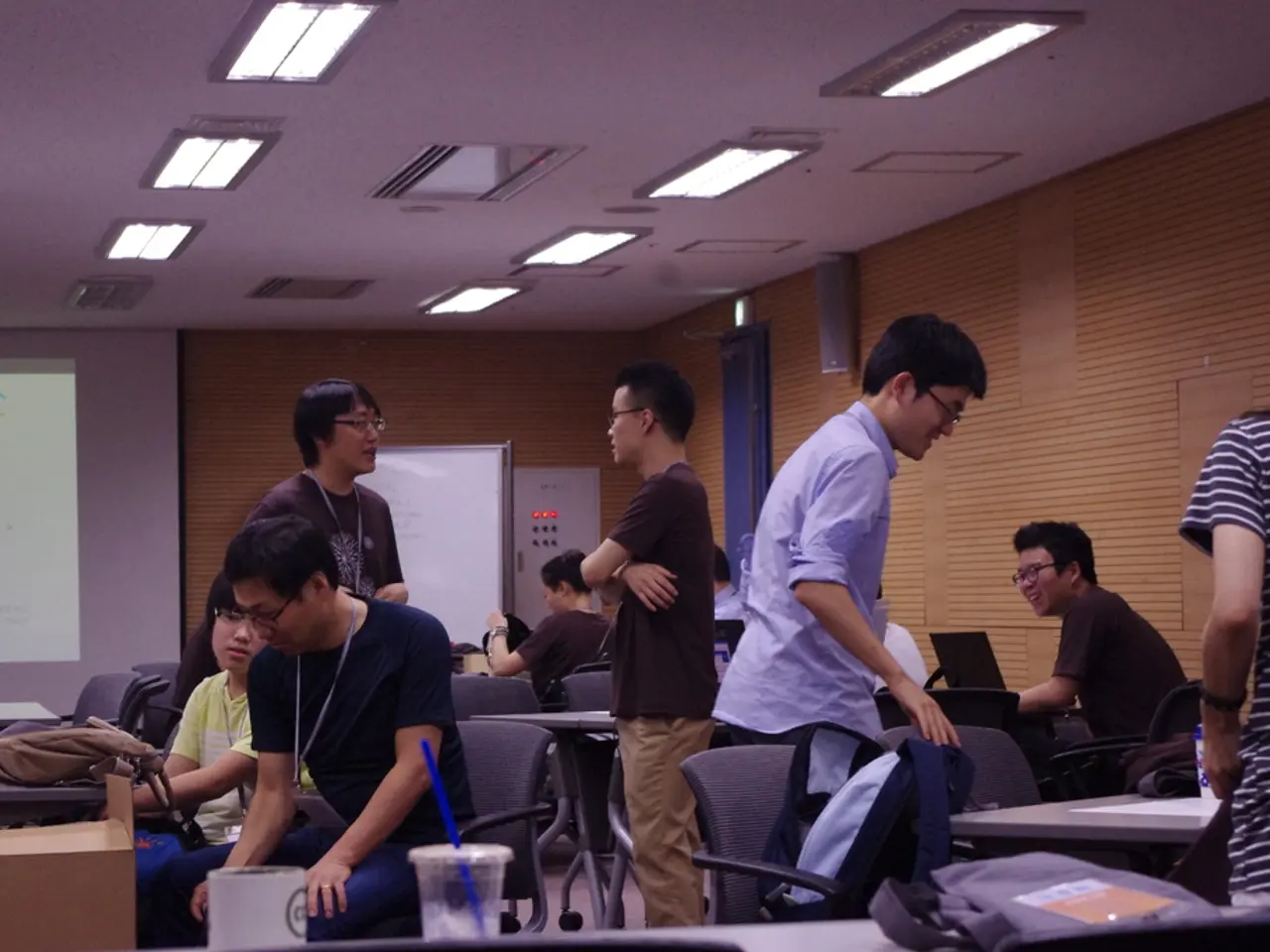Technology-Driven School Classrooms for Improved Learning
In today's digital age, schools are increasingly turning to technology to transform traditional teaching methods and create a more interactive and engaging learning experience for students. However, budget constraints can pose a challenge, necessitating the exploration of alternative funding sources such as grants, partnerships with technology companies, or community fundraising initiatives.
Artificial Intelligence (AI) is poised to revolutionize technology integration in classrooms. AI-driven tools, including personalized learning platforms, chatbots, virtual assistants, and predictive analytics, are being used to adapt to the unique needs of each student, fostering a more tailored and effective learning environment.
Integrating technology facilitates differentiated instruction, enabling educators to cater to diverse learning styles and needs. Learning Management Systems (LMS) streamline course delivery and content management within classrooms, enhancing communication between teachers and students. Collaborative tools, such as Google Workspace and Microsoft Teams, empower students to work together on projects, regardless of physical location, fostering collaboration among students.
Effective technology integration equips students with the necessary skills to thrive in a technology-driven society, ensuring they are prepared for future academic and professional challenges. Interactive whiteboards serve as a dynamic canvas for educators, allowing for real-time engagement and collaboration.
However, addressing equity in access is vital for fostering an inclusive educational environment. Disparities in access to technological resources and opportunities among students can hinder the benefits of technology integration in classrooms. To ensure all students can benefit, it's essential to focus on factors such as socioeconomic status, geographic location, and institutional resources.
Best practices for effectively integrating technology in classrooms emphasize starting small, aligning tools with educational goals, providing training, and ensuring accessibility. Future trends focus on immersive technologies like Virtual Reality (VR) and Augmented Reality (AR), AI-powered adaptive learning, and collaborative platforms that enhance engagement and personalized learning.
Teachers play a pivotal role in successful technology integration, guiding students in navigating digital tools, modeling digital citizenship, and contributing to a robust educational framework through leadership and collaboration. Integrating technology also enhances assessment and feedback mechanisms, allowing for real-time data analysis and adjustment of teaching strategies.
As technology integration in classrooms continues to evolve, educators must stay informed about advancements to enhance their teaching strategies. This combination of carefully implemented technology tools and emerging immersive/AI capabilities supports deeper engagement, personalized learning paths, inclusivity, and development of 21st-century skills like collaboration and innovation.
[1] Education Week
[2] EdTech Magazine
[3] Tech & Learning
[4] eSchool News
[5] TeachThought
- To effectively prepare educators for the digital age, professional development focusing on digital citizenship and instructional strategies for e-learning should be prioritized, drawing insights from trusted sources such as Education Week, EdTech Magazine, Tech & Learning, eSchool News, and TeachThought.
- As immersive technologies like Virtual Reality (VR) and Augmented Reality (AR) become more prevalent in education, schools can explore alternative funding sources like grants, partnerships, or community fundraising initiatives to acquire these advanced learning tools.
- To foster a more inclusive learning environment in the digital age, educators should consider the implementation of learning management systems (LMS) and collaborative tools that cater to diverse learning styles, while addressing disparities in access to technological resources among students.




